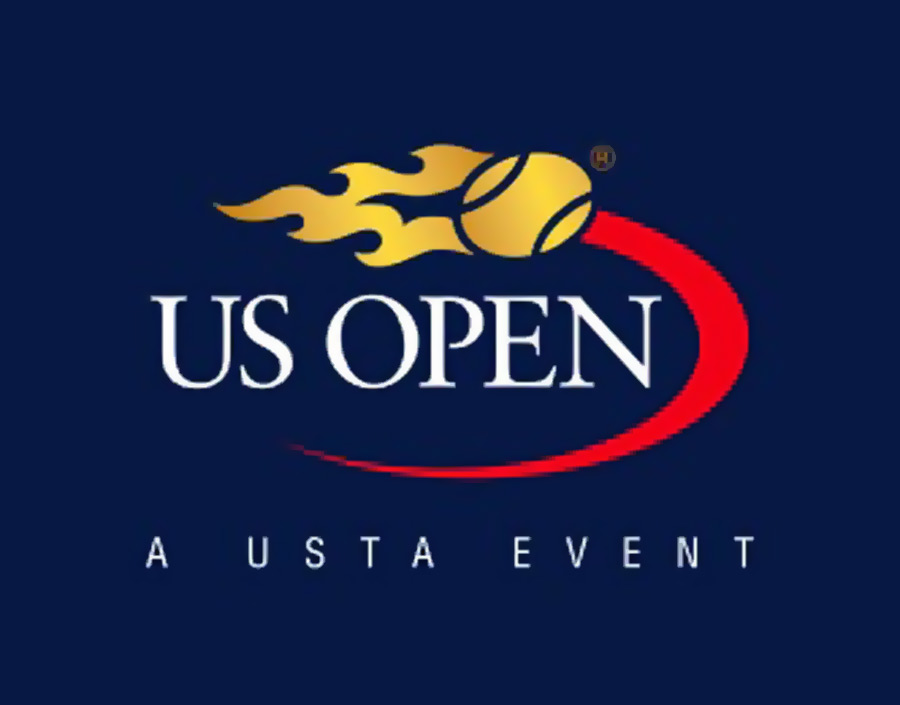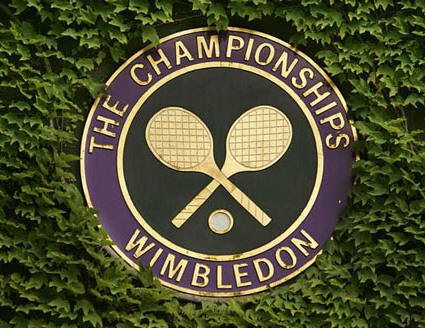The Tennis!
Tennis in the past, Suzanne Lenglen, the French 25-times Grand Slam winner
The Danish Caroline Wozniacki, the current number 1 among women
Tennis court with dimensions
The Spaniard Rafael Nadal, the current number 1 in men
Tennis Balls
The American brothers Bob and Mike Bryan, the current number 1 in men's doubles
The American Pete Sampras, former number one for men and 14-times Grand Slam winner
Tennis is a ball sport for two (singles) or four (doubles) players, with an average of 67 mm diameter ball (mostly yellow with white line) with a racket over a net to be played.
Tennis originated in France and is played in its current form since 1873. However, the name is derived from the French word "TENEZ" (in Dutch: "keep (the ball )!").
In one game, the ball inside the ends of the opponent (s) will be beaten with the aim of the opponent unable to hit the ball back over the net and its own field. If sport is perfect for tennis with some acquaintances to play without organized contests to participate. Tennis and tennis competitions for fun are generally members of tennis clubs. The Dutch governing body for tennis is KNLTB.
In every tennis season, there are four major tennis tournaments, the Grand Slams. In January the Australian Open played in May and June around the Roland Garros clay court tournament in June and July, the Wimbledon grass, and finally in August and September the U.S. Open.
[Edit] veldHet playing field is divided into two halves by a net that hangs in the middle. Each of the two halves is divided into three areas: a rear surface and two planes (service courses). The line between the two halves called the centerline and the back line is the baseline (often referred to baseline). The field and the various compartments are separated by white lines, which serve as part of the field. Beaten by a ball off the field under the opponent is beaten (ie even the line does not touch) is 'off' and gives the opponent a point. In singles, the area frame bounded by the inner sidelines. In doubles, the outer side lines used. (Both side lines are also called the "tramlines" mentioned.)
[Edit] playground tennis is played on different surfaces. In the professional circuit is mainly on grass, clay and hard court play. Since 2009 there was hardly played on carpet.
Grass (also called lawntennis)
Artificial turf
Gravel (red, crushed brick)
French Court (artificial red overlay finer than gravel, a layer of carpet to cover the drainage / no drainage to silting)
Tan Canada (coarser than clay)
Hardcourt (cement / concrete)
Indoor (floor art)
Carpet
Snap Sports (modular)
Smash Court (turf filled with very fine ceramic materials)
[Edit] Rules [edit] is serving ball from behind the baseline, the baseline, put into play with the storage where the ball is thrown with one hand up and with a racket in the other hand is beaten. Storage and service is the same. This can be done privately and overhand (underhand serve is legal, but skilled players have an advantage overhand service). Without taking the ball hit the net amount in the pocket of the opponent, diagonally against the side from which it serves. If the ball touches the net (and in the service box is) one gets a "let" and should be done about the store, but if the ball falls outside the service box is a mistake. This "let" phenomenon may repeat itself into infinity, without the point goes to the opponent.
Beaten back a serve is called a return stroke. A not touched by the opponent, correct stroke is called an ace serve. A ball on the netrand being beaten is a netball.
One can fault that once a (storage) do not directly point loss. In the second incorrect storage, called a double fault, it points to the opponent. They may serve in the back line not with the rate (s) before hitting the ball is hit is: in a foot fault, the service always wrong, even if the ball is in the appropriate box. The store in turn rotates each game. Those who serve well usually has a better chance of winning the game, though this applies to a lesser extent in women. Losing one's own storage turn, the opponent "by storage broken or has a (service) break realized.
[Edit] Types of forehand stroke - stroke with the palm of the hand forward, play is held. The forehand is useful both single and double handed beaten. A two-handed forehand is little played.
Backhand - which stroke the back of the hand forward, play is held. The backhand can be both single and double handed handy beaten.
Ground Stroke - long stroke, as it were. covers the entire playing field.
Slice / Backspin - divided into forehand and slice backhand slice. Technique whereby reverse effect is achieved through the ball with a downward motion and a slightly tilted backwards racket to play.
Topspin - divided into forehand and backhand spin spin. Technique where forward effect is achieved by the ball with an upward movement to play.
Drop shot - battle where the player plays the ball so that as soon as possible and straight behind the net hit the ground and minimize bounces.
Lobe - which the player started the ball over the opponent while playing around on the net.
Smash - Started with a high ball (usually without coccyx) above the head, the force is played by a pitch movement is similar to the storage.
Volley - stroke of the ball that could have interrupted, can both the forehand and backhand with basically played with a short movement from one position to the network when you use this shot at the net.
Half-volley - a ball, usually half standing in the field, shortly after the encounter (ie in the upward movement of the ball) is beaten.
Drive - a battle during a battle with no change to bounce out of the air is beaten in the manner of a normal forehand or backhand.
Ace - winning storage where the opponent does not hit the ball
[Edit] Materials [edit] See Tennis Balls for the editorial on this subject.
Size, weight and diameter of the ball down: The diameter of the ball should be about 6.7 centimeters. The weight about 58 grams. The bounce height, the ball of about 2.5 meters height is released, between 1.34 and 1.47 meters. There are also balls without pressure, which are harder than normal balls and play differently. Balls without pressure last longer and they are less gentle.
There are the professional tennis world almost exclusively yellow tennis balls used. During training can, however, other colors are used. Yellow-green balls are extra soft balls, which are used in mini's (young tennis players, usually to 7 years). Orange-yellow balls are extra hard. They are very suitable to be shot by machine balls. Balls machines are widely used in training
[Edit] mainly used to play tennis dress in white clothing. Today this is less severe. Usually by a men's polo t-shirt or shorts (shorts) worn. Women wear a shirt or a tennisrok or shorts or long pants in winter. Wimbledon is still required to wear white clothes, the other races anymore.
It also is used tennis shoes and tennis gloves.
[Edit] See Racket Tennis Tennis # for the editorial on this subject.
[Edit] PuntentellingDe points are counted according to the traditional British system: 15, 30, 40, game, set and match.
A match or matches to be played from two sets, although the men in big tournaments (Grand Slam, Davis Cup and Masters) to win three sets, and then they play up to a five setter. For women, the maximum number of playing three sets always.
A set is won by the player who first wins six games, with a difference of two games. If the score in a 6-5 set and the player who stands at 6 wins the next game, then it 7-5 and ended the set. However, it is 6-6 there are two possibilities with the tiebreaker being the most common:
pass until there is a difference of two games is reached.
There is a tiebreaker played. This can be regarded as a special game and the winner of this tiebreak wins the set.
Win a game they won by four points, which counted as 15, 30, 40 and 'game'. Zero point indicates one in English with traditional "love". Again, however, a difference of two. If the 40-40 (deuce) then there are at least 2 points played. First you benefit (the server) or disadvantage (the receiver) and then game, it may take long until the game is ultimately won, because the advantage or disadvantage after deuce always be.
advantage or disadvantage in English called Advantage. With Advantage there is no difference for the receiver and the server.
When "no-ad" plays the game won after the next point when the score 40-40 (deuce). The receiver decides in this situation or the left or right point of commencement.
[Edit] professional tennis competition leaders each party is led by a referee (umpire) on a raised chair at one end of it just sits. The referee knows the points, definitely in doubt (it was the ball out or in?), The obligatory rest breaks and set pieces, gives as necessary permission for injury treatment, bathroom breaks and shirt change (women), and is enthusiastic players, coaches, parents documents and other spectators in check. The referee will (usually) after the party by the players.
For a professional tennis party into 8 (sometimes 10) linesmen will be monitoring whether the ball inside, on, or outside the lines is: there are six line judges for the vertical lines and 2 (sometimes 4) for the horizontal lines. Call with words or gestures they make clear their perception. A 'bounds' and a 'netball' are always audible indicated.
Ball boys and girls pick up the balls for the players and ensure that the player who has the necessary storage receiving balls. Also provide them with the players during the game and breaks some hand-and-span services.
Since 2007, the arbitrator also assisted by an electronic system, the Hawk-Eye, which monitors the lines. Each ball is beaten track followed by a camera, on-demand system produces an animation to determine if the ball is in or out. Both players have the right set of three times the hawkeye to call (this is called a challenge). The system was previously used for television broadcasts. In matches on clay, the system is not necessary, because there the balafdruk as proof.
Page Views: #




